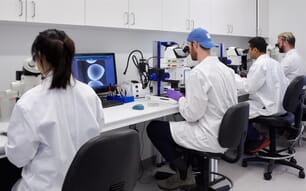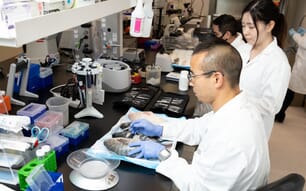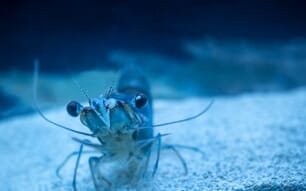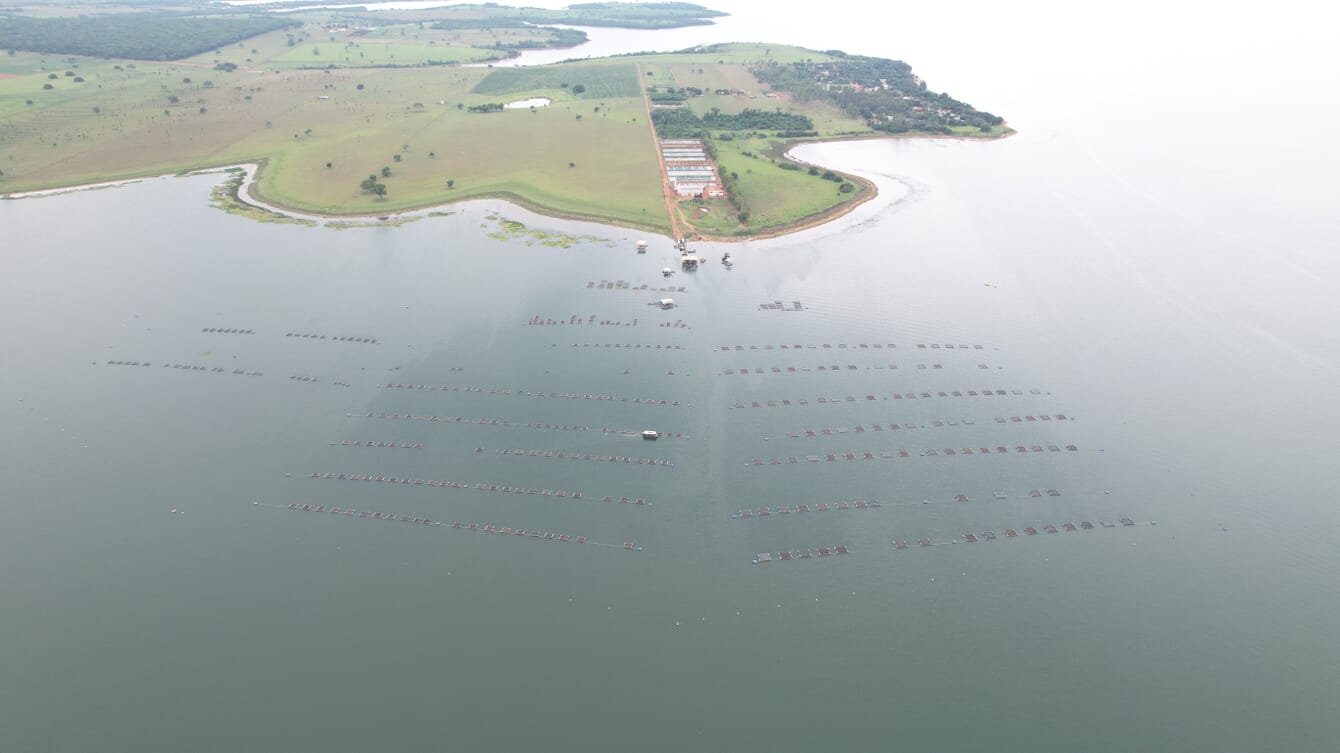
© Brazilian Fish
CAT’s CEO, John Buchanan; Matt Josephson, who has been responsible for the company’s editing work in Brazil; and Brazilian Fish’s CEO, Ramon Amaral, recently explained the details of the deal, and its wider significance, to The Fish Site.
Following the agreement, genome edited tilapia from Brazilian Fish could reach supermarket shelves in Brazil in as little as 24 months and, despite some prior unknowns about public perception of the technology, the news has been greeted very positively, suggesting that an inflection point might have been reached.
“I've only received positive feedback. Overall, we have seen support from across the spectrum: from regulators and from people in other ag-industries who have all expressed excitement,” reflects Buchanan.
“Since we announced the development of genetically edited tilapia… both existing and new customers are eager to learn more about their availability and commercialisation,” adds Amaral.
The details
The completion of the deal was recently revealed in a press release by Brazilian Fish, but to recap, as Buchanan explains: “We’ve licenced our genome editing technology to Brazilian Fish to be integrated into their breeding programme, and we will work with them on every phase of the process to drive edits, through genetic improvement, into commercial production.”
Brazilian Fish is an independent, family-owned, company with four integrated farms and a current production capacity of 12,000 tonnes of tilapia per year.
The incentive for the producer is clear: trials have shown that CAT's genome editing technology offers 45 percent improvement in tilapia yield, 25 percent improvement in growth rates and 8-10 percent improvement in feed conversion ratio.
“The goal is to improve the biological performance of our fish, focusing on weight gain, fillet yield, and reducing the cultivation time,” explains Amaral.
Remarkably, the editing work has all been done through CAT's biosecure, mobile laboratory, which was transported to Brazil and operated farm-side by a team led by Josephson. Small enough to ship in a few well-packed boxes, all CAT needs to set the lab up is access to a power source and – ideally – a roof under which to operate their state-of-the-art equipment to deliver CRISPR-mediated edits.
“We've got some great partners. Brazilian Fish is one of them. We've developed the technology and the logistics for commercial-scale, and have gotten really good at it. And that's some of the big steps for getting this first commercial scale editing out there,” notes Josephson.
“Building and operation of a mobile laboratory is an advantage of working with CAT. It took a lot of time to build a mobile lab able to do commercial scale genome editing at high throughput, and high efficiency, anywhere in the world. The mobile lab is a game-changer as it allows us to build genome editing into the great work that's gone into selective breeding and improved genetics in existing breeding programmes. This is a key breakthrough,” adds Buchanan.
CAT has developed expertise in designing guide RNAs for precise targeting. They test the guides using sequencing to identify the most effective, and Josephson has already designed over 300 gene targeting regions and tested about half, developing significant skills in determining the best targeting sites.
As Buchanan adds: “In addition to the mobile lab our company has a team of breeding scientists that work with clients on managing genetic improvement in their programmes. We are a part of the client’s team helping them design and run programmes for a lot of species - from oysters to shrimp and Seriola to salmon. Our expertise in breeding gives us unique commercial insight into how commercial breeding programmes work and we can help clients build a plan for how to integrate genome editing into their existing strategy.
“We also have a genotyping laboratory so we can build in the ability to track and manage the edits in a client breeding programme through, unique insights into how SNP genotyping works. The journey to go from idea to commercialisation needs all these things to come together.”
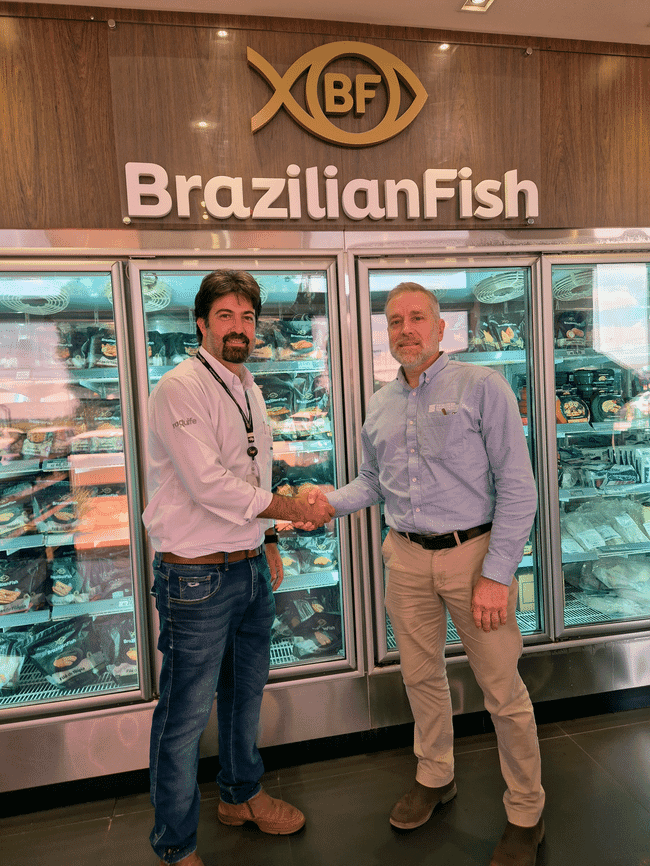
Farming the new strain
Brazilian Fish will grow the first generation of genome edited fish in their RAS unit, where they can be easily tracked and monitored.
“It will depend on the success of the next stage in the project, but our goal is to have 80 to 100 percent of our fish gene edited in the future. This increase will be gradual, as we gain confidence in the results,” notes Amaral.
In addition to the improved production traits, CAT’s genome editing technology will render 100 percent sterile fish in the growout environment, meaning any possible impact caused by escaped fish will be limited.
“An important thing is we have an effective technology for sterility as a foundational piece for how to implement genome editing. In many cases sterility is going to be a regulatory requirement, but we also want to make sure that there's no environmental impacts from big genetic improvements in the domesticated lines when they're farmed near wild populations,” Buchanan explains.
If the land-based trials prove satisfactory, the next generation can then be grown in more conventional systems – with Brazilian Fish’s grow-out mainly taking place in cages.
“From a production standpoint there'll be some practical changes: as the rate of growth is much faster, the feeding tables will have to be adjusted a bit. It's no different than having a new line of very high-performance fish, although managing the breeding nucleus will be a little bit different,” notes Buchanan.
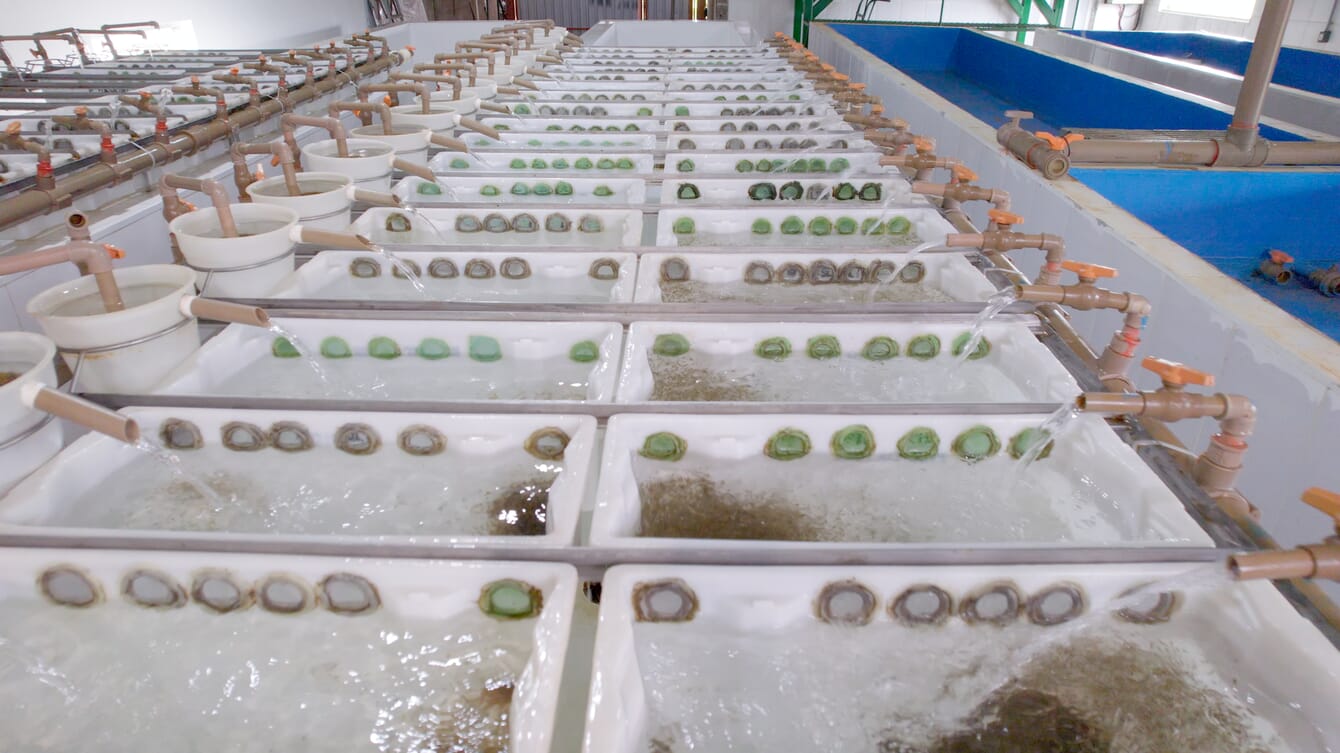
© Brazilian Fish
Significance
Although the Brazilian Fish deal is not the only commercially ready genome editing project that CAT is currently involved with, as the first to be publicly announced, its significance is substantial.
“It's the first public announcement of the progress that we're making in the area and we're big believers in the technology as a breeding tool – it’s what we do. I think that's a great step for us as a company and demonstrates the commercial viability of genome editing to truly drive productivity and sustainable aquaculture practices. And, as more as more examples of genome editing applied to animal agriculture and aquaculture come online, more people will realise that it's extremely safe and that it is really just a breeding tool, a way to accelerate breeding progress with precision and efficiency. The technology yields great benefits both for production efficiency and producing healthy food, plus we've taken seriously the obligation for environmental stewardship,” notes Buchanan.
It also helps to reinforce the value of the 10+ years that CAT has spent working in genome editing.
“Our first focus was ways to make fish sterile in production. So, once we sorted out how to best do that then we spent a good bit of time also becoming really good at the tools for genome editing and how to do it on a commercial scale. And then beyond that is just finding the right partners to work with,” Buchanan explains.
According to the CEO, there have been three key steps involved to allow them to reach this point.
“One is developing the core IP. What edits create the results we want? Whether it's better growth, better feed conversion, better yield or having the fish be sterile. Then there's the practicality of how we do this on a scale sufficient to commercialise it, which is quite challenging overall. And then the last part is how to practically build it into a breeding programme without creating genetic drag or a bottleneck in the genetic progress that's already been made,” Buchanan explains.
Given the length and complexity of the process, the team at CAT think it’s unlikely that there will be a stampede of companies offering a swathe of genome edits any time soon, but they do see their own projects gaining momentum on the back of this announcement.
“I don't think it's going to necessarily be a flood of new genome editing providers coming in. We do know there are other people working in this field, but all of the components have to come together to really make it successful,” notes Josephson.
Equally, he adds, the speed of commercialisation is partially governed by the generational intervals of the species in question – while genome edited salmon might take 6-8 years for full commercialisation, tilapia could be ready within 12 months. The regulations also play an important role, and Buchanan reviews Brazil, Japan and Australia as having particularly favourable regulatory environments.
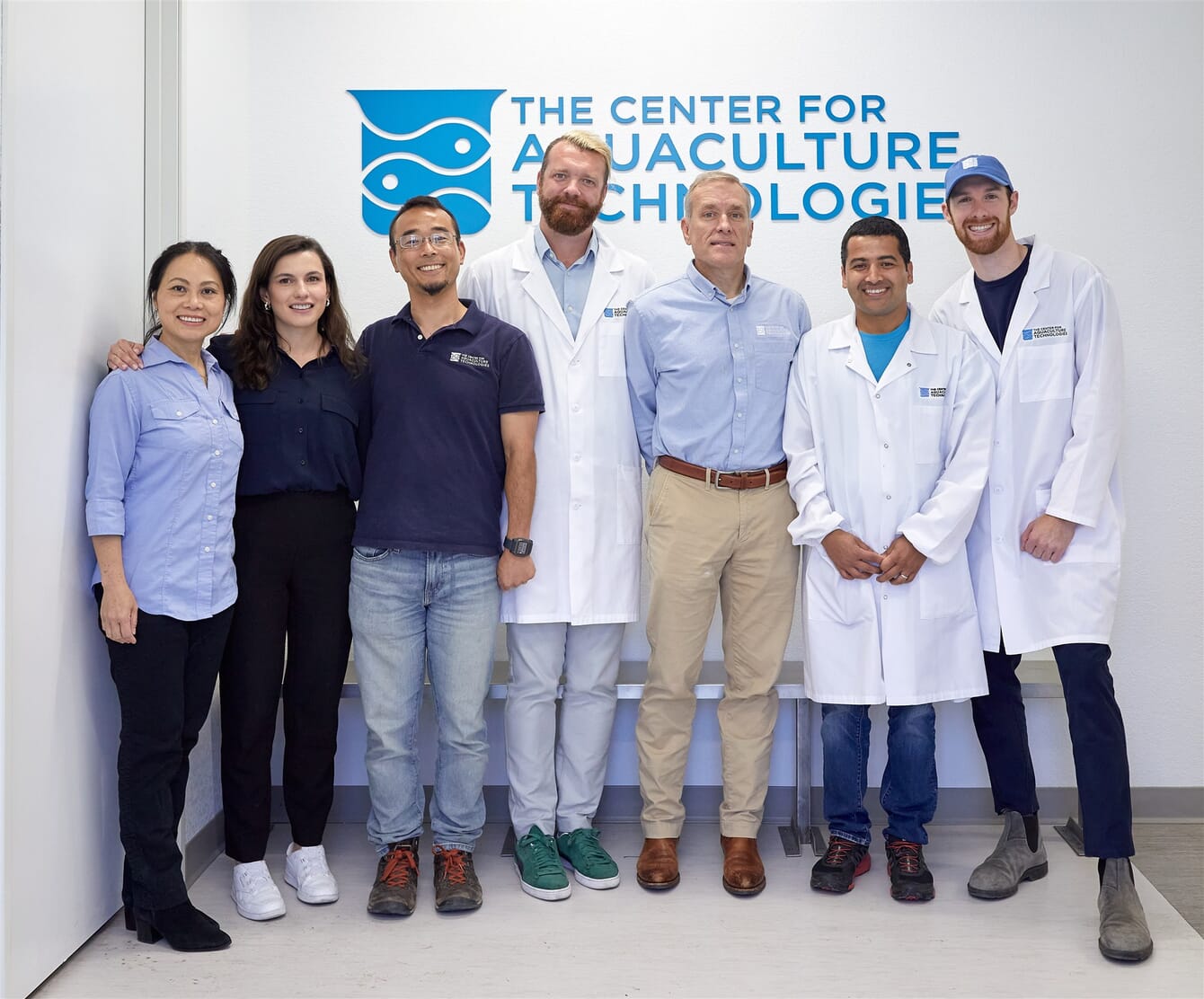
© CAT
Benefits to producers, consumers and the environment
Genome edited fish have the potential to improve vital metrics at both ends of the supply chain.
For producers, the technology offers increased performance with decreased costs, improved animal welfare and potentially improved disease resistance, while consumers benefit from better access to nutritious food and high quality protein.
“The availability of better, more abundant, nutritious food for a growing population is a benefit to consumers. Looking further down the road, there’s also the potential to use the technology to make seafood even more nutritious – you could imagine using genome editing to increase the levels of omega-3 fatty acids in certain species, for example,” adds Buchanan.
Meanwhile farming sterile genome edited fish will help to reduce concerns about the impact that fish escapes could have on the environment. Moreover, the improved feed utilisation, and potential reduction in waste, brought about by improved FCRs will reduce aquaculture’s demand for feed ingredients and its impact on water quality.
In economic terms, the impact for producers includes significant savings from improved feed efficiency and increased fillet yield.
Meanwhile, looking at the bigger picture, if the technology was widely adopted in key commercial species like tilapia, salmon, or vannamei shrimp, CAT’s financial analysis suggests the potential impact across the industry value-chain could be worth $5-15 billion in value created.
With figures like those being discussed, it’s no surprise that CAT’s team is excited about the technology. However, it is more than just the economic impact that’s motivating both the company and their key impact investor – Cuna del Mar.
“As the global population continues to grow, and with it an increasing demand for sustainable food production, genome editing offers a safe, efficient and effective method for increasing the availability of nutritious food while reducing the pressure on wild fish stocks. It’s a philosophy that we share with Cuna del Mar, so it's great to see this vision coming to life successfully,” reflects Buchanan.
For any sceptics out there, Buchanan sees CAT’s work as fast-tracking the evolution of the industry.
“We can speed up what we would select for and, in one or two generations, make the same progress as it would take in 40 generations [of traditional breeding programmes]. Genome editing is essentially just a way of getting to a well optimised domestic animal much more quickly and safely,” he concludes.
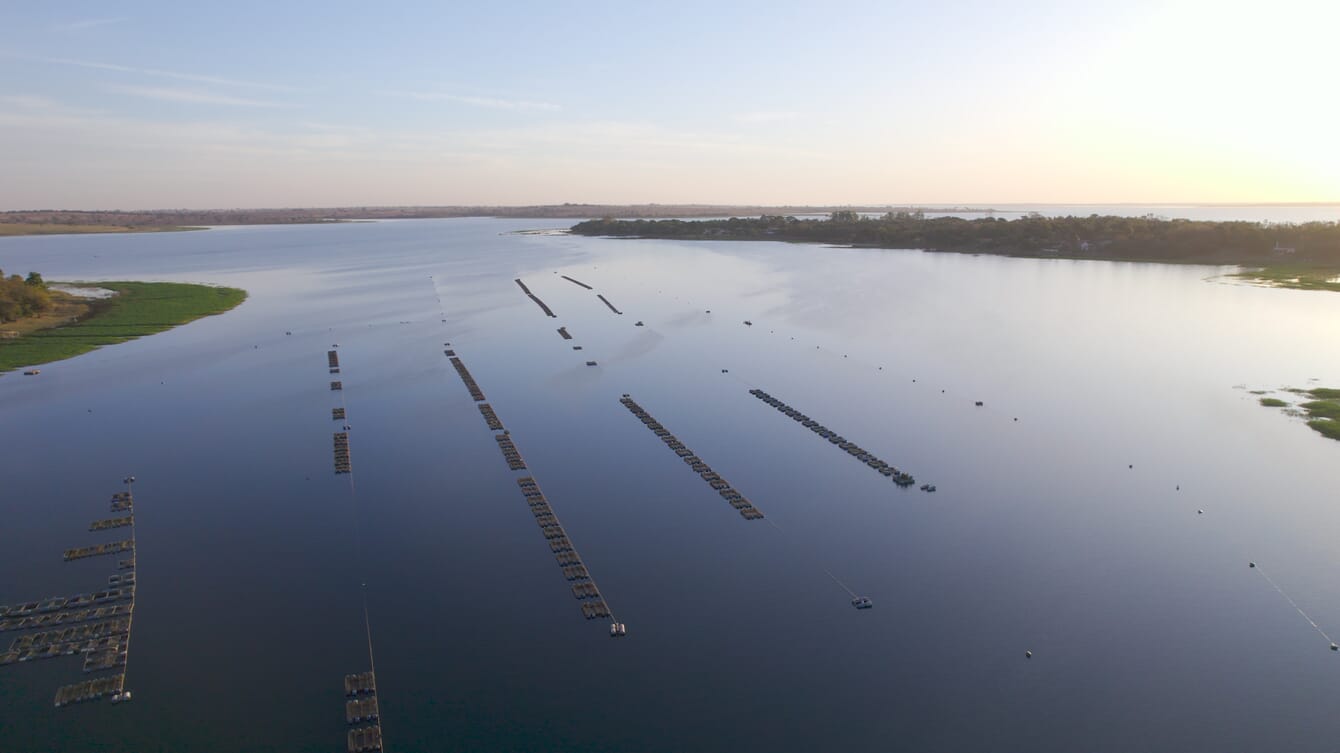
© Brazilian Fish

